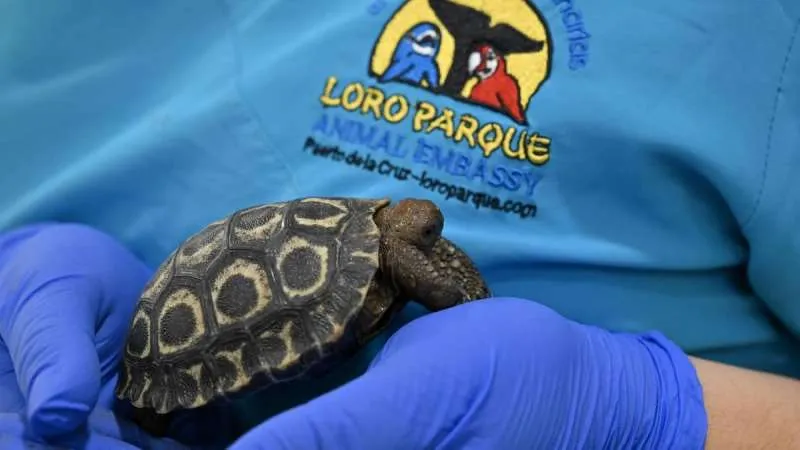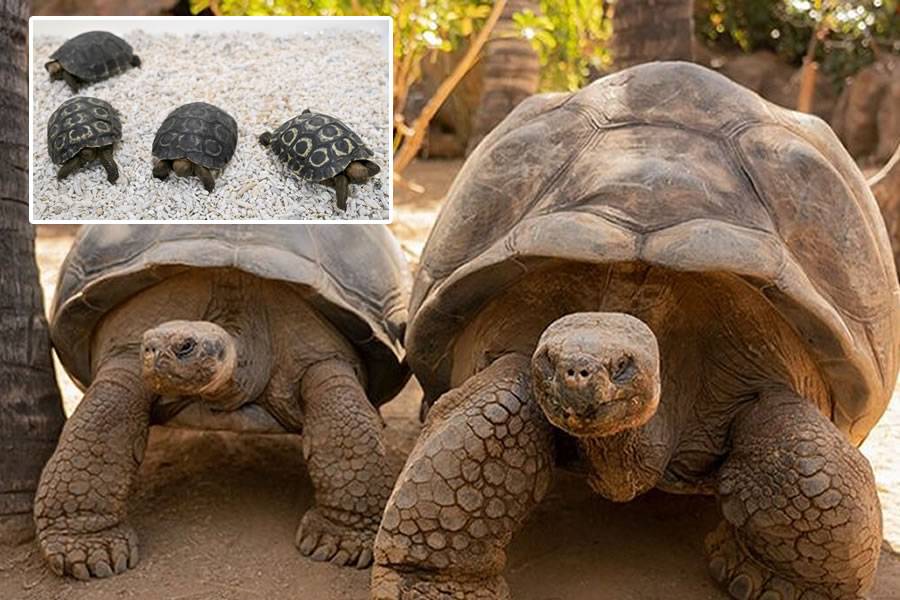Four Giant Galápagos Tortoise hatchlings born at Loro Parque
- 10-11-2023
- Tenerife
- Canarian Weekly
- Photo Credit: Loro Parque
In a groundbreaking development for the conservation of an endangered species, four new Giant Galápagos tortoises have successfully hatched at Loro Parque. The achievement is particularly noteworthy as this species has only been successfully reproduced in two accredited zoological institutions across Europe as part of a specialized breeding program.
The exceptional births bring renewed hope for the survival of a highly threatened species, five of whose subspecies have already vanished from the planet. Currently, only about 15,000 tortoises of this type remain in the wild, a stark decline from the 250,000 recorded at the time of their discovery. This renders each newly born tortoise invaluable to its species.
The International Union for Conservation of Nature classifies the Giant Galápagos Tortoise as either endangered or critically endangered. In response, the Ecuadorian government established the Galápagos National Park in 1959 to safeguard their original habitat, elevating it to the highest level of protection in 1970.
The four new hatchlings are offspring of Tom, a male tortoise residing in the park for fifty years and belonging to a rare species within the diverse group of Giant Galápagos tortoises.
The mothers, Tomasa and Ronaldiña, arrived at Loro Parque from Zurich Zoo, the only European institution to have previously successfully bred this species. The introduction of these females was specifically to initiate the breeding project at Loro Parque, a move validated by the recent births.

The program's success underlines the good conditions at the Puerto de la Cruz zoo, where the tortoises naturally reproduce and their eggs hatch. This achievement is particularly significant given the unusual reproductive challenges faced by Giant Galápagos Tortoises. Their slow metabolism results in a maturity period of up to 25 years. In fact, Tom, over 50 years old, has become a father for the first time.
Moreover, the eggs, buried by females in the sand, must encounter the ideal humidity and temperature conditions to hatch successfully over the nearly four-month incubation period. Following this, the hatchlings independently dig their way to the surface, commencing their journey of survival.
One of the most relevant questions now is determining the gender of each hatchling since there are no external visual differences. This information is crucial as 99% of tortoises are born female, making reproduction more challenging and marking the birth of males as a special event. The gender of tortoises depends on the temperature conditions during egg development, with warmer nests usually producing a higher number of females.
This birth is a significant milestone for the Animal Embassy, showcasing a new achievement in the intensive species preservation efforts undertaken by Loro Parque. A deeper understanding of their biology and habits, closely observed by experts, is essential for addressing the challenges these tortoises face in their natural habitat. Combined with breeding programs, it represents a tangible hope for the survival of these magnificent animals, capable of living over 100 years.
Other articles that may interest you...
Trending
Most Read Articles
4.
Featured Videos
A Vision of Elvis Tenerife Promo
- 10-05-2025
TEAs 2025 Highlights
- 17-11-2025



























































